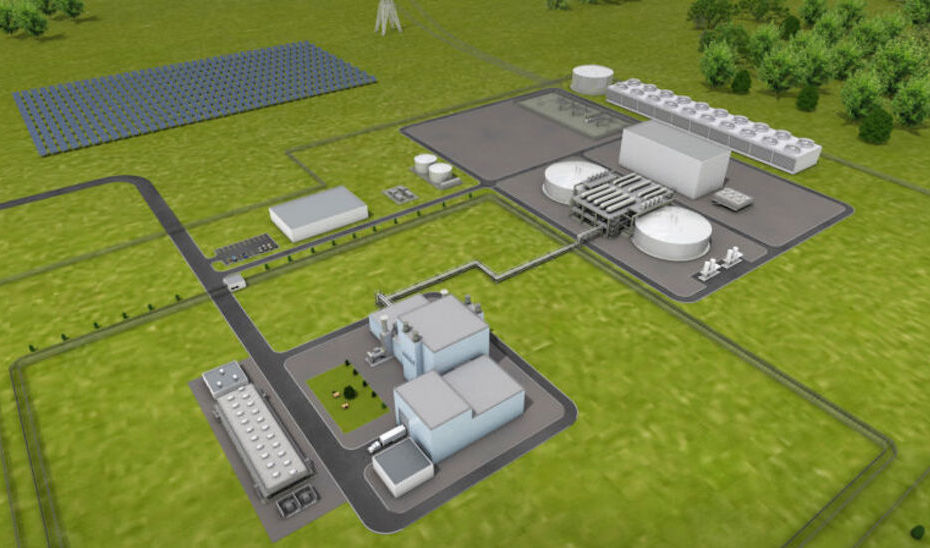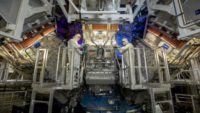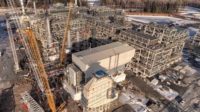TerraPower LLC, the design startup backed by Microsoft founder Bill Gates, has chosen to build a demonstration of its 345-MW Natrium advanced nuclear reactor in Kemmerer, Wyo., near the Naughton two-unit, coal-fired plant that is set to close in 2025, the firm said Nov. 17, citing an estimated $4-billion project cost.
The firm and its partners had previously narrowed the project location to four set-to-retire coal plant sites in the state for what it said earlier this year would be a $1-billion demonstration project. Sites in Gillette, Glenrock and Rock Springs also were considered.
TerraPower CEO Chris Levesque said that the first plant is always more expensive, without offering further details behind the quadrupling cost. The company hopes to cut the price of future Natrium facilities at the other former coal plaint sites in Wyoming, and elsewhere in the U.S., if built, to $1 billion, he said.
The U.S. Energy Dept., which has called the Natrium sodium-cooled reactors "the future of advanced nuclear reactor technology,” has a seven-year agreement to provide $2 billion in project development funding. The recently signed infrastructure bill contains a $2.5-billion funding allocation for all advanced reactor demonstrations, some of which will be added to previous support.
TerraPower will match all federal funding for the demonstration. Bechtel is managing project design, licensing, procurement and construction. It built the Naughton coal-fired plant, which opened in 1963. The nuclear plant is expected to create about 2,000 construction jobs, TerraPower said.
Wyoming produced about 39% of all coal mined in the U.S. in 2019, with coal-fired power plants making up about 80% of its electricity generation in 2020. However, wind power made up 12% of state power generation last year, with natural gas-fired power plants and hydroelectric facilities producing the rest.
Bechtel also leads a team that includes GE-Hitachi and TerraPower picked last year by Battelle Energy Alliance, which operates DOE's Idaho National Laboratory, to design and build at the Idaho Falls research site, the first phase of the planned Versatile Test Reactor research facility that will develop advanced nuclear fuels, materials, instruments and sensors.
Site Choice Factors
The project team evaluated Wyoming site options using several factors, including access to existing infrastructure, the physical characteristics of the site, community support and the ability to obtain a license from the U.S. Nuclear Regulatory Commission. The selection still is subject to completing definitive agreements and permitting and licensing support, TerraPower said.
Natrium technology includes a 345-MW sodium-cooled fast reactor with a molten salt-based energy storage system, the first advanced reactor to do so, Levesque said. Energy storage can boost plant output to 500 MW for about five-and-a-half hours, which allows it to follow daily load changes and helps with easier integration of renewable resources.
Natrium is a joint technology of GE Hitachi and TerraPower, which Gates founded and serves as chairman.
With the site chosen, advanced plant design will move ahead. A construction permit has been submitted to the Nuclear Regulatory Commission, with work not expected to start until 2024.
The demonstration project, when completed by 2028, will be a fully functioning commercial powerplant to be operated by Rocky Mountain Power, which will use existing energy infrastructure, including connections to the power grid, said Gary Hoogeveen, power company president and CEO, in a press briefing.
It is one of two non-water-cooled, small nuclear-reactor demonstrations supported by DOE. More than 20 companies are developing advanced reactors, including Westinghouse, Holtec International, NuScale Power and X-energy.
TerraPower touts its molten chloride fast-reactor technology as applicable to industries with high energy consumption. It operates at higher temperatures than conventional reactors, generates more electricity without emissions and can help industries reach decarbonization goals, the company said.
Separately, power company Southern Co. announced Nov. 18 that it signed an agreement with DOE to demonstrate what it said is the world's first fast-spectrum salt reactor, in collaboration with TerraPower and Idaho National Laboratory. The facility would be built at that research site.
Project team member also include CORE POWER, Orano Federal Services, the Electric Power Research Institute and 3M Co. DOE will provide a grant to cover 80% of the $170-million project, with the rest funded by Southern and the other partners.
The prototype, which uses a different reactor design than TerrraPower's Wyoming plant, could be adapted to support a 720-MW commercial scale reactor, Southern Co. says.







Post a comment to this article
Report Abusive Comment